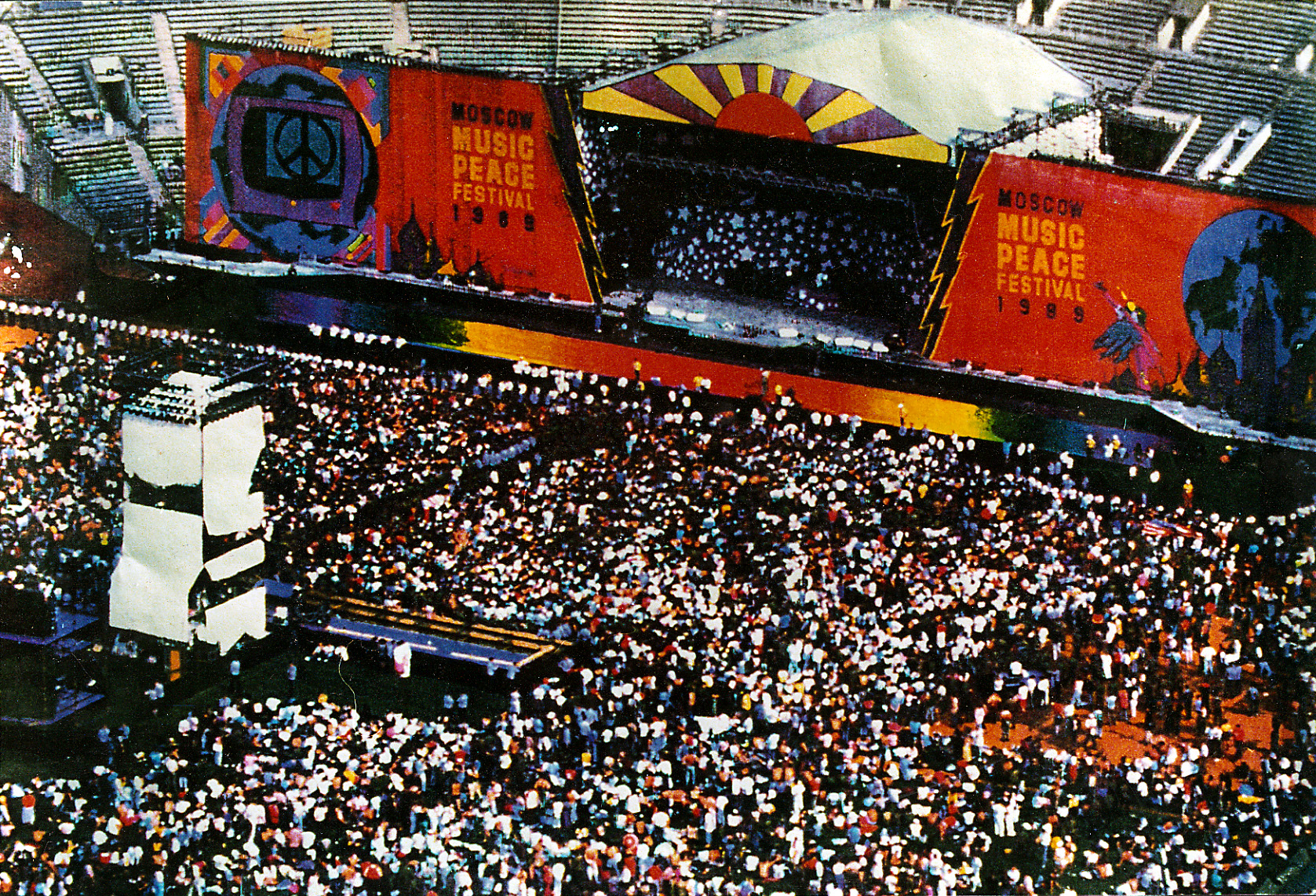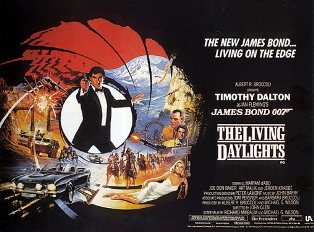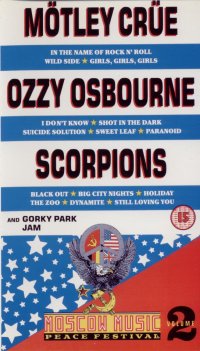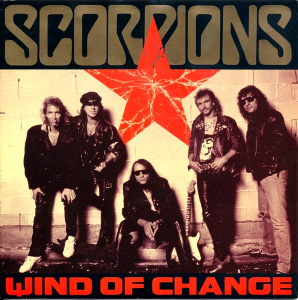
Moscow Music Peace Festival, August 1989. Image: ANO “Stas Namin Center”, CC BY-SA 3.0
“I follow the Moskva
Down to Gorky Park
Listening to the wind of change”
Wind of Change, Scorpions, 1990
The Cold War, a protracted geopolitical conflict between the United States and the Soviet Union, came to a dramatic end in the late 1980s and early 1990s. This historical turning point not only reshaped the political landscape but also influenced popular culture in significant ways which isn’t surprising. The Cold War in film, literature, and music from the late 1980s and early 1990s is a valuable remembrance of a world in transition and the public’s perceptions of those changes.
Movies: Sympathetic Captain in Changing Political Climate
In the cinematic landscape of the 1980s and early 1990s, there was a wave of films that dealt with the Cold War and its implications. Before the Cold War’s end, in movies such as Red Dawn or techno-thriller War Games, Hollywood often used themes like espionage, betrayal, and looming nuclear Armageddon. Nevertheless, as the landscape of international relations transformed and the Cold War‘s conclusion drew near, a shift in narrative and tone became evident.
One of the most famous examples is “The Living Daylights” (1987), part of the James Bond franchise, this film features a storyline involving Soviet defections, arms smuggling, and a more nuanced portrayal of the Soviet Union compared to earlier Bond movies. It reflects changing perceptions and the potential for cooperation between East and West.
Another significant movie is the film “The Hunt for Red October” (1990), an adaptation of Tom Clancy’s novel. Unlike earlier Cold War movies that portrayed the Soviets as unrelenting villains, this film featured a sympathetic portrayal of a Soviet submarine captain who defects to the West, highlighting the potential for cooperation and understanding between former adversaries. This shift in perspective mirrored the changing political climate and contributed to a sense of hope and reconciliation.
Pop and Rock Mix of Hopes and Fears
Music has always been a powerful tool for reflecting the zeitgeist of a particular era. The music of the late 1980s and early 1990s reflected the sentiment of collective hopes and fears associated with the end of the Cold War.
One of the best examples that encapsulates the mixed emotions of the era is the band R.E.M.’s song “It’s the End of the World as We Know It (And I Feel Fine)” (1987). The lyrics capture a sense of chaos and impending change, yet the refrain “I feel fine” suggests an underlying optimism, a feeling that the world is on the brink of something better.

On the other hand, artists like David Bowie and Pink Floyd continued to explore Cold War themes in their music. Bowie’s album “Heroes” (1977) and Pink Floyd’s “The Wall” (1979) dealt with the psychological and emotional toll of the Cold War, illustrating that the end of the conflict did not erase its impact on individuals and societies.
Geopolitical Reality in a Melodic Rock Ballad
The power ballad “Wind of Change” (1990) by the Scorpions holds a unique place in music history, closely intertwined with the end of the Cold War. It reflects a momentous period of global transformation and resonates with audiences worldwide, expressing a yearning for unity and an end to divisions, mirroring the larger geopolitical reality.
The lyrics, set to a gentle and melodic rock ballad, conveyed a sense of optimism and a belief in a brighter future. The opening lines, “I follow the Moskva down to Gorky Park, listening to the wind of change,” capture the spirit of a world in flux.
“Wind of Change” resonated with people on both sides of the Iron Curtain. In the Eastern Bloc, it symbolized the desire for freedom, democracy, and a new era. In the West, it represented the hope for peaceful coexistence and the end of the Cold War‘s tensions.
The song’s release coincided with the fall of the Berlin Wall and the broader changes sweeping through Eastern Europe. It became an anthem of unity and a soundtrack for the historic events taking place. The Berlin Wall‘s collapse marked a symbolic end to the Cold War‘s division, and the “Wind of Change” was the backdrop to these transformative moments.
To this day, “Wind of Change” continues to evoke feelings of nostalgia and the shared aspirations of a world moving away from the brink of nuclear confrontation. It remains a powerful reminder of the role that music can play in shaping perceptions and capturing the zeitgeist of a historical era.
Books Reimagining Borders and Identities
The topics related to the Cold War’s final phase found their place also in the popular literature. The end of the Cold War prompted many authors to reexamine the impact of the conflict on individuals and societies.
John le Carré, known for his espionage novels, shifted his focus to the post-Cold War era. In his novel “The Russia House” (1989), he depicted the changing dynamics between East and West, exploring the idea of thawing relations and newfound opportunities for cooperation.


The Russia House, the front cover art for the book written by John le Carré and the poster for the film based on the novel
Don DeLillo’s novel “Underworld” (1997) delves into the aftermath of the Cold War and the cultural shifts in American society. It explores themes of consumerism, waste, and the search for meaning in a post-Cold War world.
In the realm of science fiction, authors like William Gibson and Bruce Sterling explored the impact of technology and globalization on the post-Cold War world. Their works, such as “Neuromancer” (1984) and “Islands in the Net” (1988), provided a futuristic lens through which to view the changing world order.
Pop culture’s portrayal of the Cold War‘s end offered a nuanced and multifaceted understanding of a complex historical period. The shifting narratives in movies, music, and literature reflected the evolving political landscape and contributed to shaping public perceptions of the era.
One of the most remarkable aspects of pop culture’s role in shaping perceptions of the Cold War‘s end is its capacity to humanize and contextualize a monumental historical event. By focusing on individual stories and emotions, pop culture allowed audiences to connect with the broader geopolitical shifts on a personal level. This made the end of the Cold War not just a distant historical event but a living memory that continues to resonate with people today.


